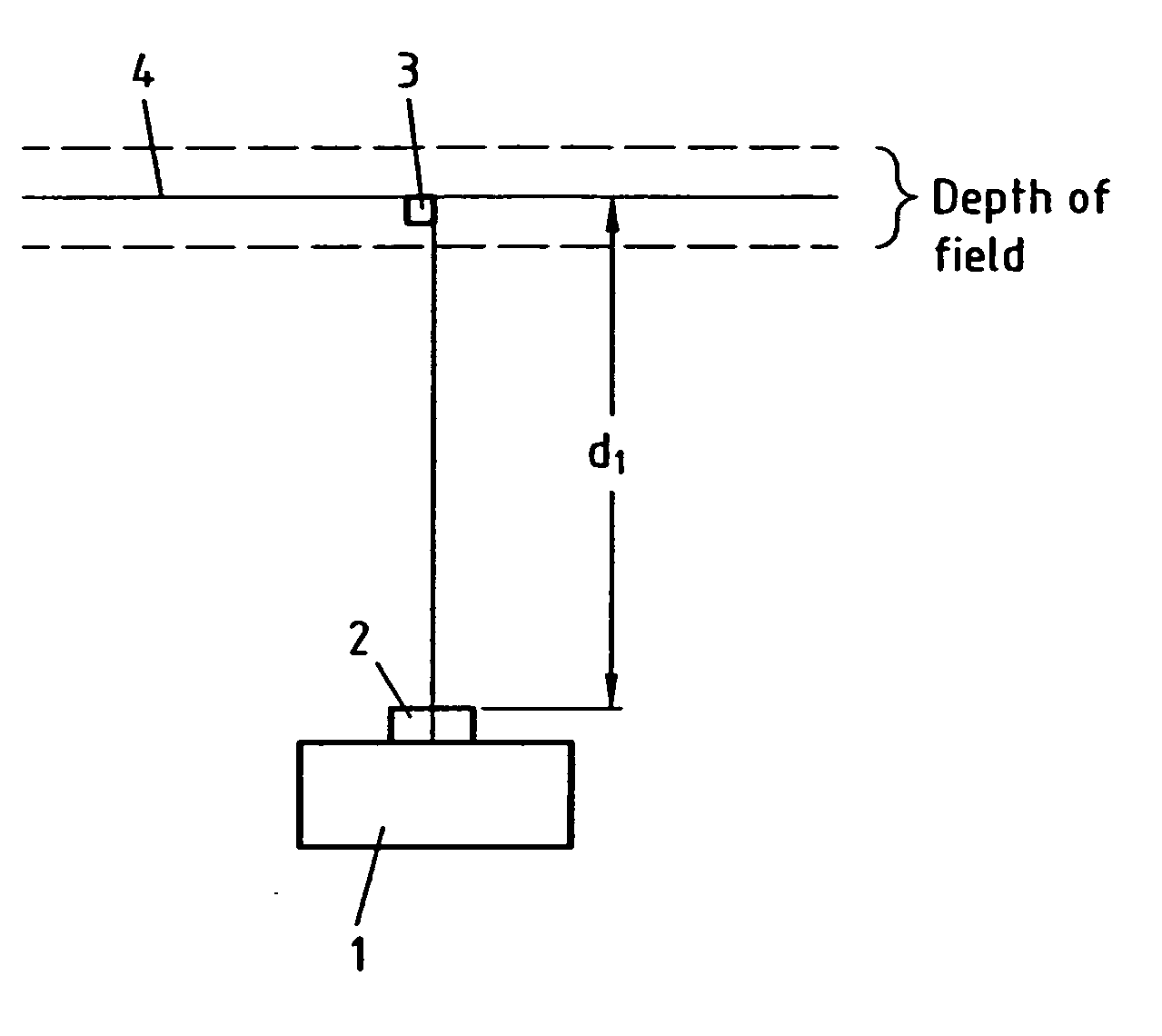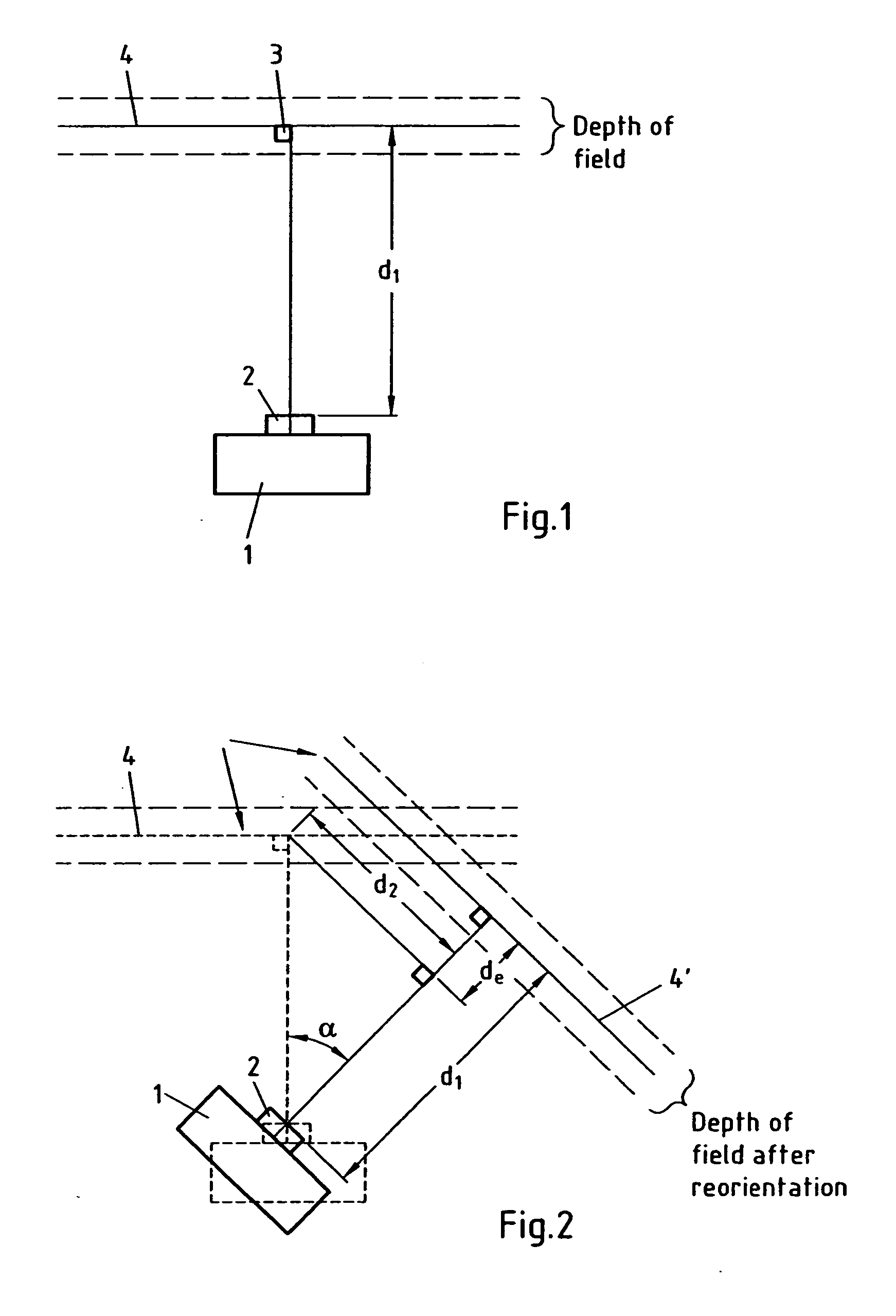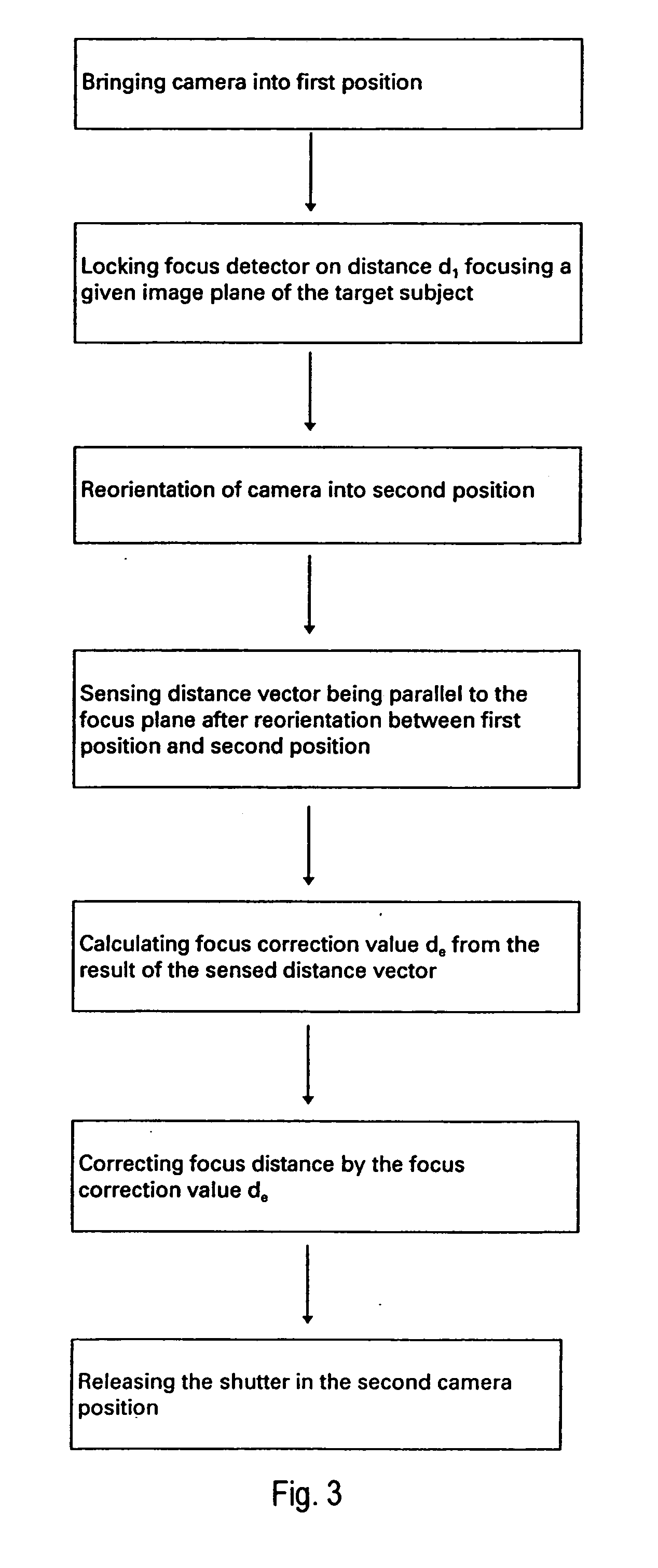Auto-focus performance
a technology of autofocus and performance, applied in the direction of camera focusing arrangement, printers, instruments, etc., can solve the problems of more difficult peripheral areas to achieve the same optical performance, the disadvantages of the known “focus and recompose” technique become apparent, and the average speed is not as fast, so as to achieve the effect of easy rotation angl
- Summary
- Abstract
- Description
- Claims
- Application Information
AI Technical Summary
Benefits of technology
Problems solved by technology
Method used
Image
Examples
Embodiment Construction
[0033] The optical imaging device according to the preferred embodiment of the present invention comprises a camera housing 1 and at least one lens unit 2 to be mounted to the camera housing 1. Moreover, an optical storage unit (not shown) is comprised in the camera, which can be an optical film in traditional (“non-digital”) cameras or a processor receiving digital signals from a CMOS image sensor to be used in a digital camera. A generalized image device may for instance include an image sensing arrangement comprising the lens assembly 2 and an image sensor. The imaging sensing arrangement captures an image and converts the captured image into an electrical form. Or, it can be captured on film. If done electrically, the electrical signal produced by the apparatus is led to an analog to digital converter which converts the analog signal into a digital form. From the converter the digitized signal is taken into a signal processor where it is processed to create an image file. The ou...
PUM
 Login to View More
Login to View More Abstract
Description
Claims
Application Information
 Login to View More
Login to View More - R&D
- Intellectual Property
- Life Sciences
- Materials
- Tech Scout
- Unparalleled Data Quality
- Higher Quality Content
- 60% Fewer Hallucinations
Browse by: Latest US Patents, China's latest patents, Technical Efficacy Thesaurus, Application Domain, Technology Topic, Popular Technical Reports.
© 2025 PatSnap. All rights reserved.Legal|Privacy policy|Modern Slavery Act Transparency Statement|Sitemap|About US| Contact US: help@patsnap.com



